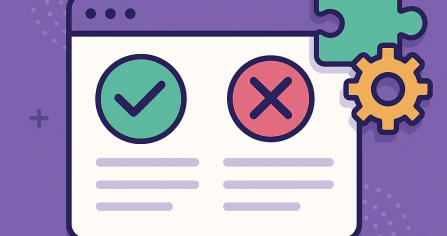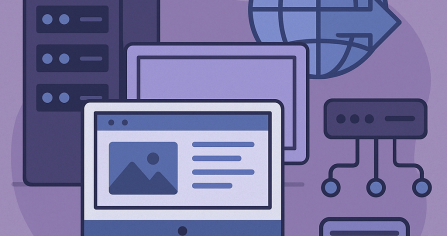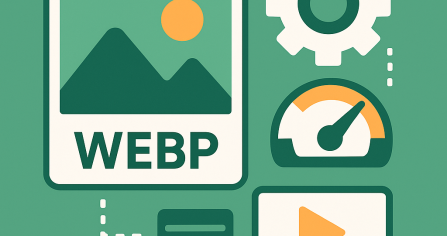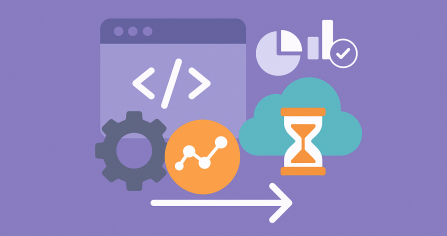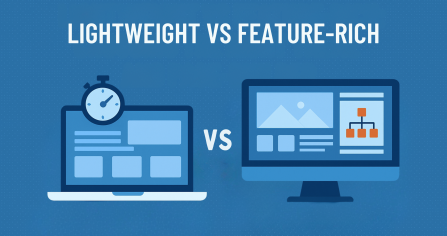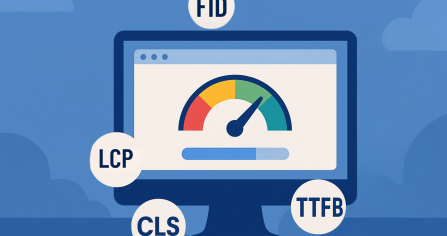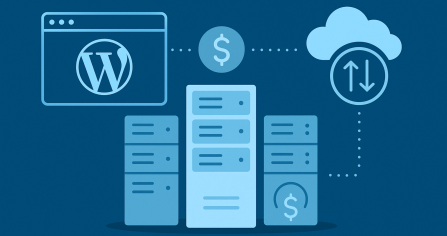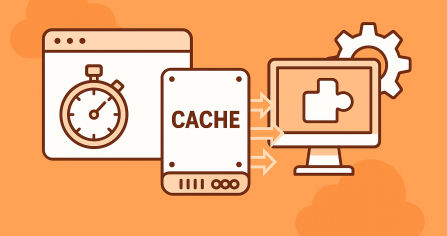-
Essential Plugins vs Bloat
Essential Plugins vs Bloat One of WordPress’s greatest strengths is its plugin ecosystem. With thousands of free and premium options, you can add nearly any feature to your site in minutes. But this flexibility comes at a cost. Too many plugins—or poorly coded ones—can slow down your site, introduce security risks, and create maintenance headaches. The key is balance: install only the plugins you truly need, and choose ones that are lightweight and well-maintained. Let’s look at how to separate essentials from bloat. Why Plugins Can Hurt Performance Plugins extend WordPress functionality by adding code that runs on every page. Some add only a few lines of CSS or a single database query, while others load multiple scripts, styles, and assets whether or not you’re using them. The risks of plugin overload include: Slower page load times due to excessive scripts and styles Conflicts between overlapping features Security vulnerabilities in abandoned plugins Difficult updates and debugging when too many dependencies exist More isn’t always better. The right set of lean plugins is far more powerful than a bloated toolkit. Categories of Essential Plugins Nearly every WordPress site benefits from a few core functions. Here are the plugin categories worth including: […]
-
Building a Scalable WordPress Stack
Building a Scalable WordPress Stack A small WordPress site can run on almost any host, but once traffic grows, you’ll need a stack that can scale. High-traffic blogs, busy WooCommerce stores, and agency-managed multisite setups all demand infrastructure that can handle spikes without crashing. Scaling isn’t just about speed—it’s about reliability and redundancy. Here’s how to build a WordPress stack that grows with you. Why Scalability Matters If a blog post goes viral, or an ecommerce campaign attracts thousands of buyers, your site must respond quickly. Without proper scaling, you’ll face: Downtime during traffic surges Checkout failures for WooCommerce customers Frustrated visitors who abandon the site Scalable architecture ensures your site handles growth smoothly instead of breaking under pressure. Reverse Proxies and Load Balancers One of the first steps to scaling is introducing reverse proxies or load balancers. Reverse proxy (e.g., Nginx, Varnish): Sits between the server and visitors, caching content and reducing the load on your origin. Load balancer: Distributes traffic across multiple servers so no single server becomes a bottleneck. Together, these tools make it possible to serve thousands of visitors without overwhelming one machine. Using CDNs Effectively A Content Delivery Network (CDN) replicates your site’s assets across […]
-
WooCommerce Performance Guide
WooCommerce Performance Guide Running an online store on WordPress with WooCommerce opens up endless opportunities, but it also brings performance challenges. Unlike a simple blog, ecommerce sites rely on dynamic pages—carts, checkouts, and customer dashboards—that can’t always be cached like static pages. If left unoptimized, WooCommerce stores can quickly become slow, especially as traffic grows. This guide outlines the key steps to keep your WooCommerce store fast, responsive, and reliable. Why WooCommerce Stores Are Different Traditional caching and optimization tricks don’t always apply to ecommerce. For example: The cart and checkout pages must remain dynamic to reflect the user’s actions. AJAX requests constantly update cart fragments, which can slow performance. Product pages often display dynamic stock levels, badges, or personalized recommendations. All of these moving parts mean WooCommerce requires extra attention to performance. Caching Rules for WooCommerce Caching can still deliver huge benefits if set up correctly. Exclude cart, checkout, and my account pages. These must stay dynamic to avoid breaking functionality. Cache product and category pages. Preload them after updates so they’re fast for the next visitor. Warm up caches after major changes. Plugins like WP Rocket or LiteSpeed Cache can automate this. For global delivery, pairing server caching […]
-
Image & Media Optimization Deep-Dive
Image & Media Optimization Deep-Dive Images and media files are some of the biggest factors that affect WordPress performance. A single oversized banner or autoplay video can drag load times down by several seconds. For sites that rely heavily on visuals—like portfolios, blogs, or online stores—optimization is essential. The good news is that you don’t need to sacrifice quality for speed. With the right formats, compression methods, and loading strategies, you can deliver beautiful visuals that load quickly even on mobile devices. Why Images Matter for Speed On most WordPress sites, images make up 50–70% of total page weight. If they are too large, uncompressed, or poorly implemented, they directly impact: Largest Contentful Paint (LCP): Hero images often determine how fast a page feels to load. Cumulative Layout Shift (CLS): Missing dimensions or late-loading banners cause elements to jump. Time to First Byte (TTFB): Heavy media can delay the server’s response. Every optimization step helps improve these metrics. Choosing the Right Formats Not all image formats are created equal. JPEG: Best for photographs with many colors. Smaller file size but some quality loss. PNG: Good for transparency and graphics. Larger file size. WebP: Modern format supported by most browsers. Smaller […]
-
Third-Party Scripts: Minimizing the Damage
Third-Party Scripts: Minimizing the Damage A fast WordPress site can be undone by something many site owners overlook: third-party scripts. Analytics trackers, chat widgets, advertising networks, and social embeds often load extra JavaScript that slows pages down. While some of these tools are essential, many add more weight than value. The good news is that you don’t have to give them up completely. With smart loading strategies, you can keep the functionality you need while minimizing the performance cost. The Hidden Cost of Third-Party Scripts Every third-party script introduces additional requests. For example: Google Tag Manager adds multiple tracking scripts. Analytics tools like GA4 or Facebook Pixel inject JavaScript that runs on every page. Chat widgets load iframes and tracking code. Ad networks can insert dynamic content that shifts layouts. Each script adds time to rendering and increases Interaction to Next Paint (INP). Ad scripts, in particular, can hurt Cumulative Layout Shift (CLS) by making elements move around when loading. Strategies to Reduce Impact The goal isn’t to eliminate all third-party code, but to manage how and when it runs. Delay or Defer Loading Scripts don’t all need to run immediately. You can: Defer analytics until after a user interacts […]
-
Lightweight vs Feature-Rich: Choosing the Right Theme and Page Builder for WordPress
Lightweight vs Feature-Rich: Choosing the Right Theme and Page Builder for WordPress When you launch a new WordPress site, one of the first decisions you face is how to design it. Do you pick a flexible page builder like Elementor or Beaver Builder, or do you start with a lean theme like GeneratePress and use Gutenberg, WordPress’s native block editor? This choice matters more than many site owners realize. The theme or builder you choose affects how fast your site loads, how stable it feels, and how easy it is to maintain. In this article, we’ll compare popular builders with lightweight themes, explore their impact on performance, and give you a decision framework to help you choose what fits your needs. Why Page Builders Can Slow Down a Site Page builders are popular because they make design simple. You can drag and drop elements without touching code. The trade-off is that they often produce a large Document Object Model (DOM), the structure a browser renders before showing a page. The larger the DOM, the longer it takes to display content. This affects Largest Contentful Paint (LCP), the moment your main content becomes visible. It also increases memory use, which can […]
-
Demystifying Core Web Vitals for WordPress
Demystifying Core Web Vitals for WordPress Website performance isn’t just about how fast a page feels when you load it. Google measures speed and user experience using specific metrics called Core Web Vitals. These metrics affect not only search rankings but also how visitors perceive your site. The challenge for many site owners is that performance tools can be confusing. PageSpeed Insights shows a score, Core Web Vitals list separate numbers, and results often look different on mobile and desktop. This article breaks it all down in plain language so you know what to measure and how to improve it. What Core Web Vitals Really Mean Google uses three primary signals to judge real-world experience: Largest Contentful Paint (LCP) Measures how quickly the main content of a page loads. Think of it as the time it takes for the biggest element, often a hero image or headline, to appear. Good score: under 2.5 seconds. Interaction to Next Paint (INP) Replaced First Input Delay (FID) in 2024. Measures how fast the site reacts when a user clicks or taps. Good score: under 200 milliseconds. Cumulative Layout Shift (CLS) Measures how stable the page is while loading. If images, ads, or buttons […]
-
Hosting Matters: How to Pick the Right Plan for a Fast WordPress
Hosting Matters: How to Pick the Right Plan for a Fast WordPress Your WordPress host is the foundation of your site. No matter how well you optimize images or fine-tune plugins, poor hosting can drag everything down. A fast server improves Time to First Byte (TTFB), helps pages load quickly, and creates a smoother experience for visitors. Choosing the right hosting plan isn’t always straightforward. Shared, VPS, managed, and cloud options all promise performance, but they deliver very different results. This guide breaks down what really matters when picking a host and when it’s worth upgrading resources. Types of Hosting Explained Shared Hosting Cheapest option, many sites share the same resources. Limited CPU and memory per site. Fine for small blogs or starter projects, but often struggles with traffic spikes. VPS (Virtual Private Server) More control and dedicated resources than shared. Better performance and scalability. Requires some technical knowledge for server setup and security. Managed WordPress Hosting Built specifically for WordPress with optimizations included. Hosts like Kinsta or WP Engine offer staging environments, backups, and caching. More expensive but removes much of the technical burden. Dedicated Servers Full physical server to yourself. Best for very high-traffic sites, but usually overkill […]
-
Caching 101: Server-Side vs Client-Side and Choosing Plugins Wisely
Caching 101: Server-Side vs Client-Side and Choosing Plugins Wisely If you want a faster WordPress site, caching is one of the most powerful tools you can use. It reduces the amount of work your server does for every request and delivers pages more quickly to visitors. The challenge is that caching comes in many forms, and WordPress offers dozens of plugins that promise to speed things up. This article breaks caching down in plain language. You’ll learn the difference between server-side and plugin-based caching, how popular tools compare, and the best practices that prevent common mistakes. What is Caching, Really? When someone visits your site, WordPress normally builds the page from scratch. It pulls content from the database, runs PHP, and loads all your CSS and JavaScript. This takes time and uses server resources. Caching saves a ready-made version of the page so it can be served instantly on the next request. There are different types: Page caching: Stores entire HTML pages. Object caching: Saves database query results in memory. Opcode caching: Keeps compiled PHP code ready for reuse. Database caching: Reduces repeated queries. Server-Side Caching Server-side caching happens before WordPress even runs. This is the most efficient form of […]

